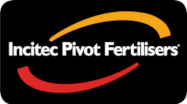Dyno Nobel showcases technology that pushes the boundaries of what's possible in drill and blast operations for mining customers
This week at International Mining and Resources Conference (IMARC) 2023, Dyno Nobel showcased the safety, productivity, and sustainability benefits of its new blasting technology solutions through our Connected Bench and future forward electric Mobile Processing Unit to global mining customers.
Dyno Nobel’s Chief Technology Development Officer, Robert Rounsley said Dyno Nobel’s practical technology solutions were providing its Australian and international mining customers with significant benefits.
“Our customers want and need partners who can provide them with technology that helps solve their unique challenges on site, while also delivering safety, productivity, sustainability and environmental benefits,” Mr Rounsley said.
“This is what we have been delivering for our customers as we take our ‘connected bench’ technology strategy from a vision to reality.”
In development since 2017, the Connected Bench now consists of four key technology building blocks: digital systems, automation and control systems, digitally controllable initiation systems, and variable energy bulk products.
The Connected Bench is an industry leading system that delivers mining customers a safe and efficient workplace for the teams in the open cut mines.
Mr Rounsley said there were also a number of blasting technology systems in development in the Dyno Nobel technology pipeline, including electric Mobile Processing Units (MPU), a purpose-built vehicle that delivers explosives on mining sites.
“We have worked with great industry partners and are really excited with the recent progress we’ve made developing an electric MPU prototype and plan to have an electric MPU operating on a customer site in 2024.
“As we look to the future, the ultimate aim is to have electric MPUs that replace the current diesel vehicles so that we can reduce emissions for both us and our customers.”
Since 2018, Dyno Nobel has provided IMARC attendees with an update on the progress of the Connected Bench and this year, Dyno Nobel’s Vice President of Bulk Product Technology Brett Macaulay explained key developments.
The Connected Bench is a method that brings together all the components of the drill and blast (D&B) process in a digital setting. This includes explosives delivery systems, bulk products, initiation systems, hardware, people, and other D&B resources. The connected bench links them in the most efficient way to enhance safety, productivity, and sustainability in blasting outcomes.
"The synergy of the connected bench means that all elements communicate and coordinate smoothly, pushing the boundaries of what's possible in drill and blast operations," Dr Macaulay said.
Automation technology is a key focus to drive safety outcomes.
“Automation removes people from potentially hazardous environments, can eliminate variability caused by human decision making in the loading process, and can significantly enhance operational efficiency on site.
“A key automation development we offer our customers is a semi-autonomous bulk loading truck. The MPU can be operated remotely, allowing our explosives operators and our customers’ employees to be away from potentially dangerous environments.
Dr Macaulay emphasised the vital role of sustainability in Dyno Nobel’s innovations. “We’re all about making a positive impact, especially with products like DIFFERENTIAL ENERGY®. This isn’t just about reducing emissions, it’s about preserving our environment, making sure products are eco-friendly by minimising nitrate leaching, and reducing hazardous chemicals from bulk products.”
When it comes to productivity, Dyno Nobel’s single-pass hole loading maximises MPU productivity, offering increased pumping time, reduced reloads, and improved utilisation.
“It’s about giving our customers the best experience. We want our technology to make their jobs easier and more efficient, all while delivering the best possible blasting outcome.” Dr Macaulay said.
Background
The four building blocks of the Connected Bench explained:
1. Digital Solutions: The Backbone of the Connected Bench
At the heart of the Connected Bench is a robust cloud infrastructure facilitating comprehensive data management and employing advanced modelling tools for precise blast predictions. These next-generation models reduce calculation times from hours to mere minutes, facilitating rapid refinement of blast designs to achieve a desired blast outcome.
2. Automation and Control Systems: Redefining Safety and Efficiency
The newly designed control system is purpose built for real time data collection with the required security for managing explosives equipment. The data can be used for many things including predictive maintenance, productivity measurements, and safety protocols.
3. Advanced Initiation Systems: Precision in Every Blast
Dyno Nobel has re-engineered initiation systems for seamless integration into the Connected Bench. Upgraded functionalities, such as built-in DGPS, ensure precision and speed, and eliminate human error in the tagging process.
4. Enhanced Bulk Product Systems: Maximising Efficiency with Variable Energy
The fourth pillar of 'Connected Bench' is the advanced bulk product systems, optimising blasting through variable energy use. These systems address the non-uniform nature of rock masses, enabling precise energy application with a pioneering end-of-hose sensitisation system. This approach adjusts explosive density in real-time during loading, tailored to specific geological conditions.
For more information, please contact:
Debbie Guest
Group Corporate Affairs Manager
m: +61 455 745 639
e: debbie.guest@incitecpivot.com.au


